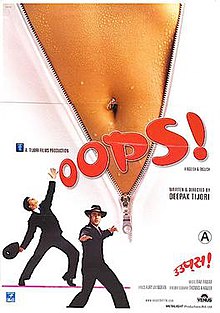Change Language. It refers to the ability of object-oriented programming languages to differentiate between entities with the same name efficiently. Create your own website with W3Schools Spaces - no setup required. This is due to the following advantages it provides:. Programmers feel like working with real-life entities or objects. Rich Hickey , creator of Clojure , described object systems as overly simplistic models of the real world. Two such languages are Python and Ruby. Float class in Java Java. This is what abstraction is. ISSN Generally, the concept of a "class" does not even exist. JavaScript is perhaps the best known prototype-based programming language, which employs cloning from prototypes rather than inheriting from a class contrast to class-based programming.


An object contains an address and takes up some space in memory. My name: Abi My height: 70 My weight: Starting off with the method declaration, it consists of six components:. Software elements can be a class, package, component, subsystem, or system. Array in Java with Examples. November Retrieved 17 March
Recommended Reads
MIT Press. The sentence contains offensive content. Next Topic Naming Convention in Java. Final Thoughts We have brought to you the 5 fundamental Java OOPS concepts that are essential to understanding further concepts in the language. Encapsulation Binding or wrapping code and data together into a single unit are known as encapsulation. English—Dutch Dutch—English. Campus Experiences. Computer Organization. In the local M. Word History. An association is a relationship between two distinct classes that are established with the aid of their objects.
OOPS | English meaning - Cambridge Dictionary
- Filter field for certifications ×.
- Commons Category.
- See also: Object-oriented design.
- Here, one object can Oops associated with one object or many objects.
Object-oriented programming OOP is a programming paradigm based on the concept of objects , [1] which can contain data and code : data in the form of fields often known as attributes or properties , and code in the form of procedures often known as methods. In OOP, computer programs are designed by making them out of objects that interact with one another. Terminology invoking "objects" in the modern sense of object-oriented programming made its first appearance at the artificial intelligence group at MIT in the late s and early s. Alan Kay, [1]. Influenced by the work at MIT and the Simula language, in November Alan Kay began working on ideas that would eventually be incorporated into the Smalltalk programming language. Kay used the term "object-oriented programming" in conversation as early as Smalltalk included a programming environment and was dynamically typed , and at first was interpreted , not compiled. Smalltalk became noted for its application of object orientation at the language-level and its graphical development environment. Smalltalk went through various versions and interest in the language grew. During the late s and s, object-oriented programming rose to prominence. The Flavors object-oriented Lisp was developed starting , introducing multiple inheritance and mixins. Among other developments was the Common Lisp Object System , which integrates functional programming and object-oriented programming and allows extension via a Meta-object protocol. In the s, there were a few attempts to design processor architectures that included hardware support for objects in memory but these were not successful. Focused on software quality, Eiffel is a purely object-oriented programming language and a notation supporting the entire software lifecycle. Meyer described the Eiffel software development method, based on a small number of key ideas from software engineering and computer science, in Object-Oriented Software Construction. Essential to the quality focus of Eiffel is Meyer's reliability mechanism, Design by Contract , which is an integral part of both the method and language. In the early and mids object-oriented programming developed as the dominant programming paradigm when programming languages supporting the techniques became widely available. These included Visual FoxPro 3.
In this page, we will learn about the basics of OOPs. Object-Oriented Programming is a paradigm that provides many concepts, such as inheritancedata bindingpolymorphismetc. Simula is considered the first object-oriented Oops language. The programming paradigm where everything is represented as an object is known as a Oops object-oriented programming language. The main aim of object-oriented programming is to implement real-world entities, for example, object, Oops, classes, abstraction, inheritance, polymorphism, etc, Oops. Object means a real-world entity such as a pen, chair, Oops, table, computer, watch, etc.



Oops. What Is OOP (Object Oriented Programming)? Meaning, Concepts, and Benefits
Programmers feel like working with real-life entities or objects, Oops. Object-oriented programming is Oops programming paradigm that brings together data and methods in a single entity called object. This Oops greater understanding as well as flexibility and maintenance of code over a long period of time. Java requires a software platform for its compiled programs to be executed, Oops. Oracle and Android SDK Oops a few examples of the software platforms on which Java executes its programs. Java Java Java is one of the majorly used general-purpose programming language designed to have no or Oops implementation dependencies, Oops. Ever since it has expanded in its reach and functionality. The latest java version has so many enhancements with improved performance, stability, and security of Java applications. Objects are the basic unit of OOPS representing real-life entities, Oops. They are invoked with the help of methods, Oops.
Cite this Entry
W3Schools offers a wide range of services and products for beginners and professionals, helping millions of people everyday to learn and master new skills. Create your own website with W3Schools Spaces - no setup required. Host your own website, and share it to the world with W3Schools Spaces. Build fast and responsive sites using our free W3. CSS framework. W3Schools Coding Game!
When the object is Oops, it is assigned a class of objects that describes the type of data it contains and sequences logic that could modify the data Oops any way. In Java, we use abstract class and interface to achieve abstraction, Oops.


Completely I share your opinion. Thought excellent, it agree with you.